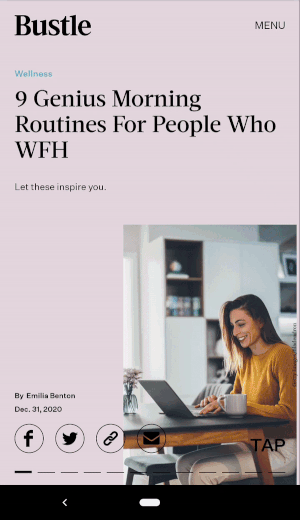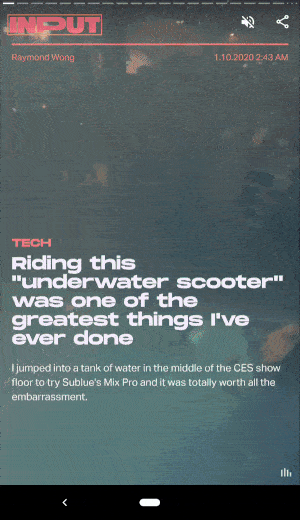Lastly, for Input’s Pixel 5 vs. iPhone 12, we used Web Stories to showcase camera comparisons, showing someone flipping through photos on the phones in real time. This is the best of what happens on social media and what YouTubers do with review videos, but compressed into a format that feels a hundred times more native on a mobile device.
Can you tell us a bit about your results with Web Stories so far?
We’ve seen tremendous performance on our Web Stories. We've been able to expose a much larger audience to our content — not only because of how shareable stories are, but also due to where they appear on Google Search and Google Discover.
Our advertisers love that Web Stories give them an opportunity to tell their stories in a different way. They’ve become an integral part of how we help partners tell their stories.
How do you look at the future of storytelling and content consumption more broadly on the web?
Web Stories are a sign of things to come. Beyond text, images and video, there are other things on your phone today — real-time 3D, interactivity, mobile gaming — that you could experience within HTML and within the browser. From a design perspective, you have a variety of opportunities to add typography, color and more. The combination of these elements could lead to massively powerful experiences.
Any high-level advice about how to think about the Web Story format as a whole?
The most practical advice I can give is to take this format seriously. We’ve seen stories spread like wildfire across social media, and we have early and positive results that people want them elsewhere. This is a new format, a new space — think about it as an open canvas to reinvent your storytelling.
It's important to ask, “What stories should we tell and how would we tell them if we had different tools?” The limitations are diminishing and the opportunities are increasing. I think the next year or two is going to be explosive in terms of creativity, but in order to tap into that creativity, you have to wipe the slate clean and start from scratch.

